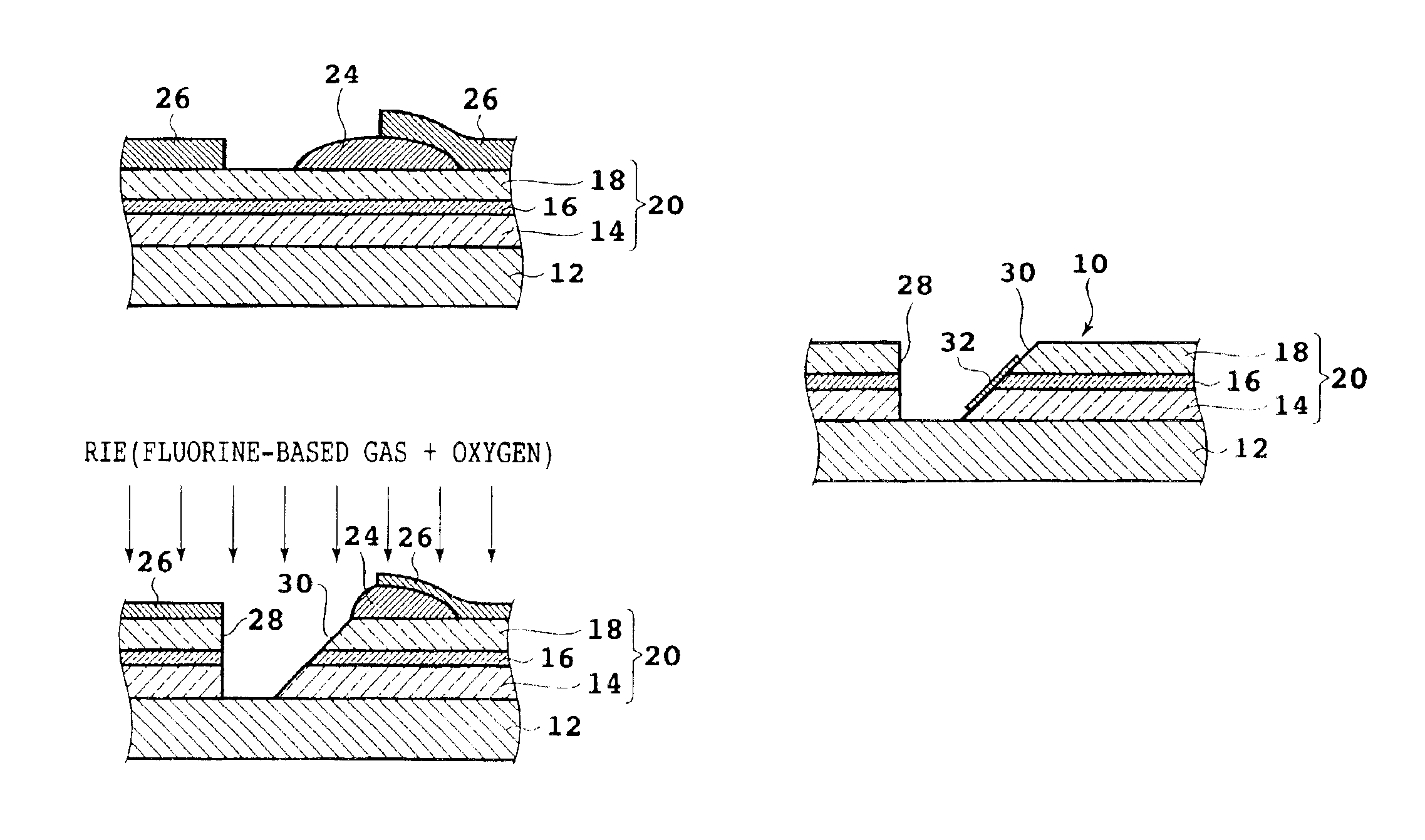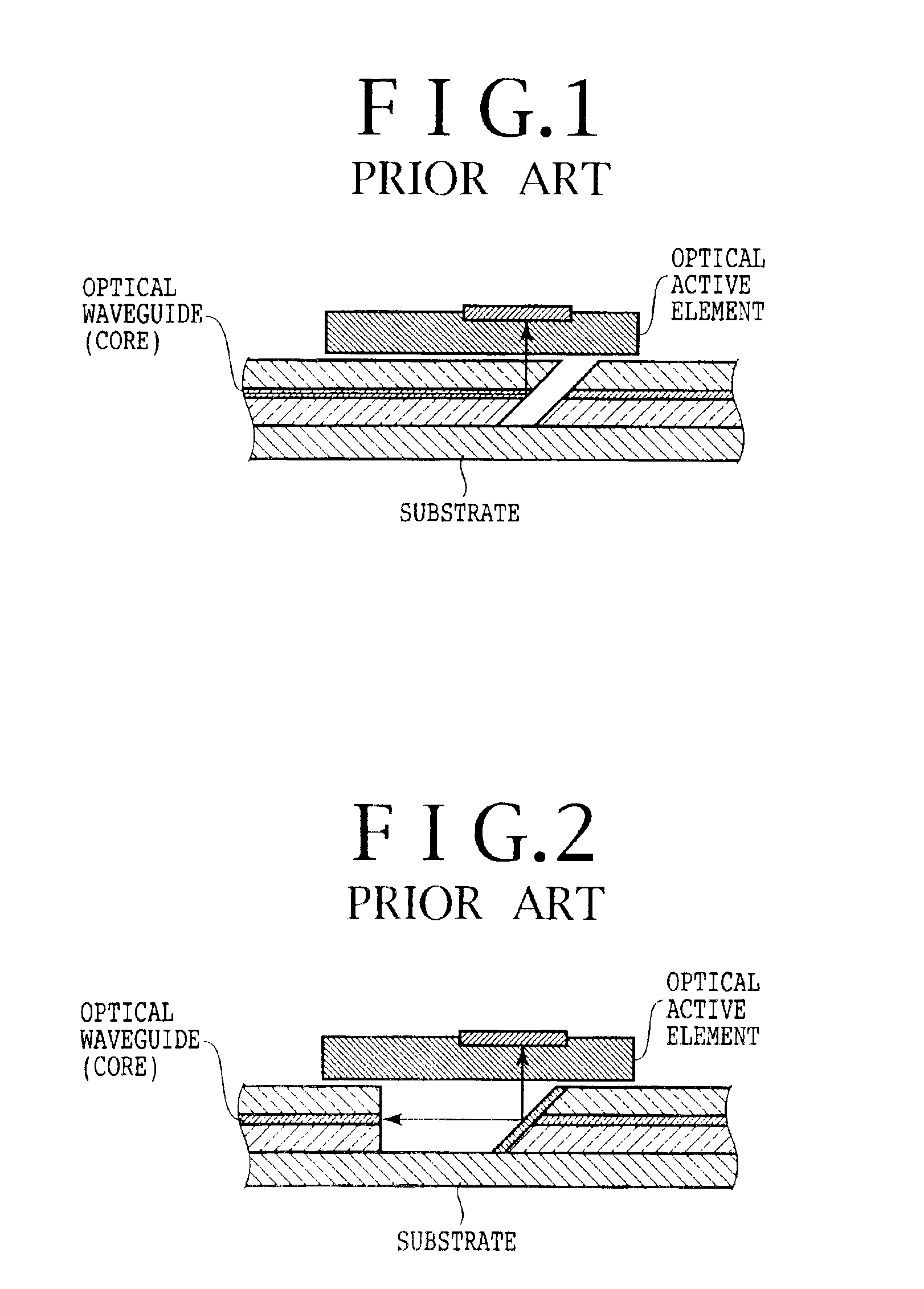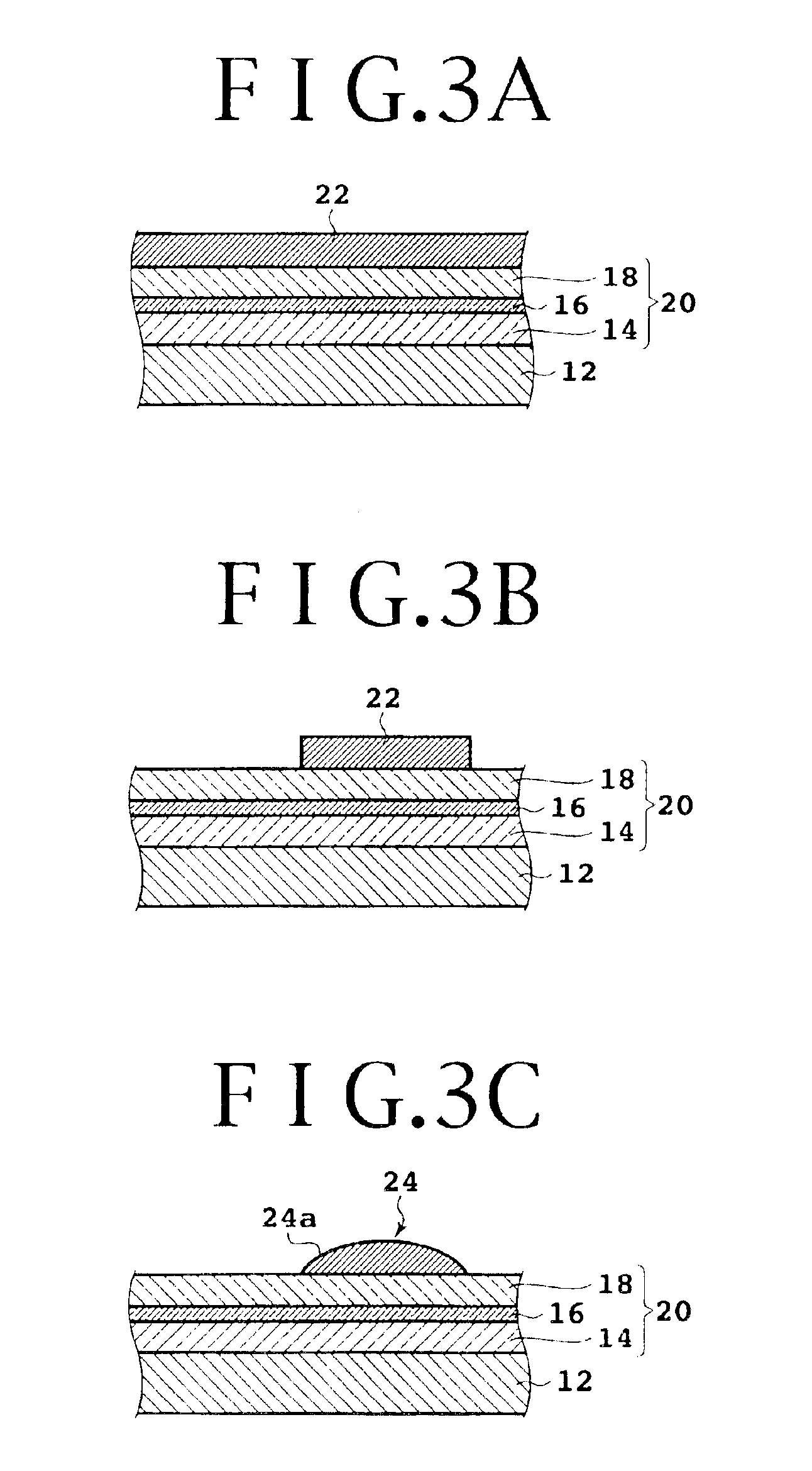Manufacturing method for optical integrated circuit having spatial reflection type structure
a technology of optical integrated circuit and manufacturing method, which is applied in the direction of photomechanical equipment, instruments, originals for photomechanical treatment, etc., can solve the problems of large increase in cost of optical communication system, increase in cost between optical integrated circuit and outside of package, etc., and achieve accurate and efficient formation
- Summary
- Abstract
- Description
- Claims
- Application Information
AI Technical Summary
Benefits of technology
Problems solved by technology
Method used
Image
Examples
Embodiment Construction
[0042]Some preferred embodiments of the present invention will now be described in detail with reference to the drawings. FIGS. 3A to 3H are sectional views showing a manufacturing method according to a first preferred embodiment of the present invention in the order of steps. As shown in FIG. 3A, an optical waveguide layer 20 consisting of an undercladding layer 14, a core 16, and an overcladding layer 18 is formed on a Si substrate 12. The optical waveguide layer 20 is a silica-based optical waveguide layer, which is deposited on the substrate 12 by CVD (Chemical Vapor Deposition), FHD (Flame Hydrolysis Deposition), or sputtering, for example.
[0043]A first photoresist 22 for formation of an inclined surface is applied to the upper surface of the optical waveguide layer 20 so as to obtain a thickness of about 10μm by the use of a spin coater. The first photoresist 22 is formed of an organic photosensitive material. For example, a positive resist OFPR-800 manufactured by Tokyo Ohka ...
PUM
| Property | Measurement | Unit |
|---|---|---|
| Wavelength | aaaaa | aaaaa |
| Wavelength | aaaaa | aaaaa |
| Size | aaaaa | aaaaa |
Abstract
Description
Claims
Application Information
 Login to View More
Login to View More - R&D
- Intellectual Property
- Life Sciences
- Materials
- Tech Scout
- Unparalleled Data Quality
- Higher Quality Content
- 60% Fewer Hallucinations
Browse by: Latest US Patents, China's latest patents, Technical Efficacy Thesaurus, Application Domain, Technology Topic, Popular Technical Reports.
© 2025 PatSnap. All rights reserved.Legal|Privacy policy|Modern Slavery Act Transparency Statement|Sitemap|About US| Contact US: help@patsnap.com



